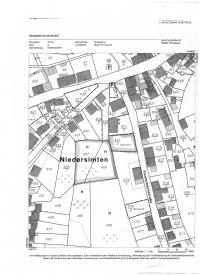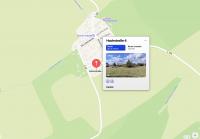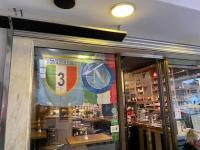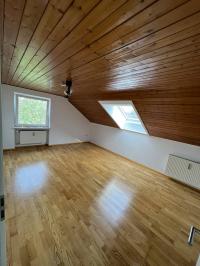France : the indication of the energy efficiency class of the real estate property becomes compulsory Specifying the energy efficiency class of a real estate property for sale was already compulsory in France. From 1st January 2011, property sellers will be obliged to indicate the energy efficien ...
Green Real Estate, Sustainable Real Estate
In the south of Freiburg in Germany near the border with Switzerland and France, there is the Vauban, one of the most important European examples of sustainable neighbourhood, built and designed in collaboration with citizens. The city of Freiburg, considered the European capital of sustainability, in the early '90s decided to build a green neighbourhood in a peripheral area, a short distance from the city centre. The planning began in 1993 and in early 2000 began to move the first inhabitants. The entire district of 38 hectares was completed in 2006 and now 5,000 inhabitants live and there are 600 jobs.
What makes it unique is the choice the district Vauban project based on the principle of "learning while planning" which provides for close collaboration during the study between urban and architectural designers and future residents of the neighbourhood.
The new homes have one of Vauban energy standard of 65 kWh / against 100 kWh/m2a of a typical German house of the 90s, or even the 200 kWh/m2a of older houses. Were also constructed 92 passive houses, with a consumption of only 15 kWh/m2a (energy savings achieved primarily through passive solar systems, technologies for heat recovery and thermal insulation of houses), as well as 10 units of houses "plus energy" (plus-energy house), which produce more energy than they consume.
The houses are heated by a central facility with high efficiency using wood chips as fuel, and the heat is redistributed from a single network solution that provides higher efficiency heating systems independent.
Rainwater is collected and recovered through a system of infiltration on the ground that covers 80% of the residential area. For sewage, by waste from the toilet, a system of vacuum pipes carrying water in a facility was created where they are allowed to ferment together with organic waste to generate biogas, which is then used in kitchens. And yet the water that moderates the climate through the streets of the neighbourhood. All the pedestrian centre it is crossed by a small channel of water that does not freeze in winter because they are always in motion, and in summer helps to cool the air.
From the beginning the goal of city planners and citizens was a "parking-free" and "car-free", where you can live free from the constraints of the cars. In Vauban, there are no private parking lots for homes, but only a common parking place on the edge of the neighbourhood. Within which the cars may move, but only for collection and delivery, at 30 km / h in the main street and 5 km / h maximum in the inner streets. The entire urban design is bound by this choice: school, kindergarten, supermarket, offices, shops, green areas and other facilities are all reachable on foot or by bicycle. Do not miss bus to the centre of Freiburg, is approximately 3 km, a tram line running through the neighbourhood and the car sharing service. The incentives are important: those who joined the car sharing
It enables the collection door to door, made through bins of different colours placed before the inputs of the dwellings, which the company passes to the waste to empty once a day.
The secret to an experimental project as Vauban, who manages to bring together different social realities in a space the size of a quarter, is in the process of communication and exchange that has accompanied the project design. The neighbourhood is still growing and building sites are always open.
Related Insights
-
France : the indication of the energy efficiency class of the real estate property becomes compulsory
-
Satellite rooms: the perfect solution to the shortage of space
Satellite rooms: the perfect solution to the shortage of space Spain: “ReHabitar en nueve episodios” is an exhibition organised by the Spanish Ministerio de Vivienda – the local Ministry for Housing – It is the result of the research conducted by the group Habitar of the Polytechnic University of ...
-
Transform your house into an eco-friendly dwelling
Are you thinking of renovating your house in order to resell it? Choosing ecological building and decorating materials could be a winning choice. The use of non toxic materials and the installation of renewable energy sources will surely add value to the property, as home buyers increasing ...
-
Green Real Estate, Sustainable Real Estate
In the south of Freiburg in Germany near the border with Switzerland and France, there is the Vauban, one of the most important European examples of sustainable neighbourhood, built and designed in collaboration with citizens. The city of Freiburg, considered the European capital of sustainability, ...
Real Estate Listings
For sale Bar/Restaurant/Nightclub, Germany, Bornheim, wesseling, Bahnhofstrasse 26

For sale
Bar/Restaurant/Nightclub
67 m²
For sale Development Property, Germany, Stolberg (Rheinland), Pirmasens, Niedersimten

For sale
Development Property
990 m²
For sale Bar/Restaurant/Nightclub, Germany, Aalen, Neresheim, Marktstraße 4 Neresheim

For sale
Bar/Restaurant/Nightclub
180 m²
For sale Bar/Restaurant/Nightclub, Germany, Ingolstadt, Ingolstadt, Mercystrasse

For sale
Bar/Restaurant/Nightclub
300 m²
For sale Development Property, Germany, Koblenz, 56288 Lahr, Hochstraße 4

For sale
Development Property
902 m²
For sale Development Property, Germany, Villingen-Schwenningen, Schwenningen(OT), Karl-Marx-Straße 23, 78054 Villingen-Schwenningen

For sale
Development Property
274 m²
For sale Bar/Restaurant/Nightclub, Germany, Rosenheim, Rosenheim, Münchener Straße 34

For sale
Bar/Restaurant/Nightclub
45 m²
For sale Business, Germany, Kempten (Allgäu), Kempten, Kempten

For sale
Business
200 m²
For sale 2 Bedrooms, Germany, Bad Oeynhausen, München, St.-Bernhard-Straße 1, 86438 Kissing

For sale
2 Bedrooms
48 m²
For sale Villa, Germany, Bad Oeynhausen, München, Rhododendronweg 13 Lerchenau

For sale
Villa
150 m²
